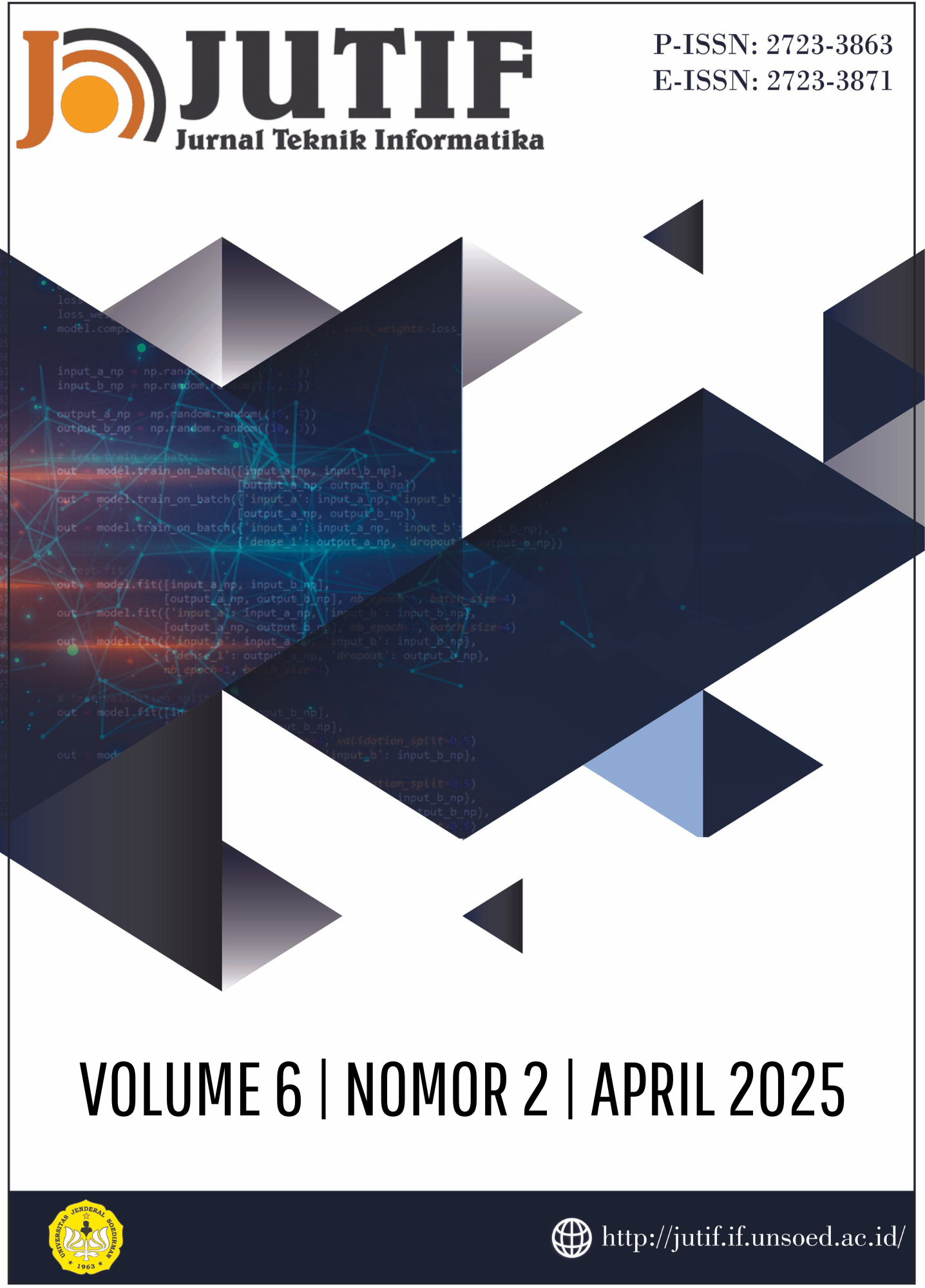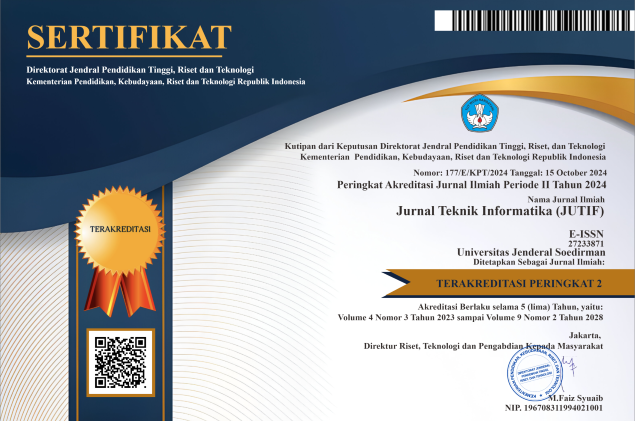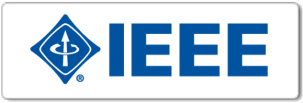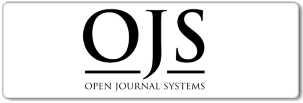Comparing Orientation Position in Close-Range Photogrammetry for the Documentation of Waruga Cultural Heritage as 3D Objects
DOI:
https://doi.org/10.52436/1.jutif.2025.6.2.4305Keywords:
Close Range Photogrametry, Comparison, Cultural Heritage Informatics, Orientations, WarugaAbstract
Waruga is a distinctive cultural artifact found exclusively in the Minahasa region. Despite its historical and cultural significance, efforts to preserve Waruga remain inadequate. Many structures have been left neglected, covered in fungi, or even damaged over time. Additionally, government-led relocation initiatives have contributed to the loss of their original form, further threatening this invaluable Minahasa cultural heritage. This study aims to examine the impact of photographic orientation in the creation of 3D models using close-range photogrammetry techniques. The resulting 3D models will be displayed on a digital platform to support the preservation and promotion of Minahasa culture. The photography process was divided into two categories: point-of-view shots and high-angle shots. Findings indicate that the optimal angle for point-of-view shots is 15 degrees downward, while for high-angle shots, it is 30 degrees downward. Furthermore, comparative analysis of Waruga structures with varying shapes demonstrates that portrait orientation yields 3D models that more accurately resemble the original objects compared to landscape orientation when using the same number of images. The study concludes that portrait orientation is the most effective approach for 3D reconstruction of Waruga, offering advantages such as faster processing times and reduced file sizes. In contrast, landscape orientation presents challenges, including difficulties in capturing intricate details, increased processing time, and larger file sizes. These findings provide valuable insights into optimizing digital preservation techniques for Waruga and other cultural heritage artifacts.
Downloads
References
G. G. B. Piri, I. Sumampow, and W. Waworundeng, “Kepemimpinan Pemerintah Desa dalam Pemberdayaan Budaya Mapalus di Desa Tumaratas Kecamatan Langowan Barat Kabupaten Minahasa,” GOVERNANCE, vol. 3, no. 1, 2023.
G. Tumbelaka, I. Y. M. Lattu, and D. Samiyono, “Negosiasi Identitas Kekristenan dalam Ritual Kampetan di Watu Pinawetengan Minahasa,” Anthr. J. Antropol. Sos. dan Budaya (Journal Soc. Cult. Anthropol., vol. 6, no. 1, pp. 1–9, 2020.
T. F. Pandaleke, F. V. I. A. Koagouw, and G. J. Waleleng, “Peran Komunikasi Sosial Masyarakat Dalam Melestarikan Bahasa Daerah Pasan Di Desa Rasi Kecamatan Ratahan Kabupaten Minahasa Tenggara,” Acta Diurna Komun., vol. 2, no. 3, 2020.
K. T. Anjani and P. Setiyonugroho, “Waruga as a Unique Cemetery for the Minahasa Tribe,” Criksetra J. Pendidik. Sej., vol. 12, no. 1, pp. 83–92, 2023.
A. Tulus, “KAJIAN MAKNA SIMBOLIS RAGAM HIAS PADA WARUGA-WARUGA DI MAUMBI KABUPATEN MINAHASA UTARA,” KOMPETENSI, vol. 1, no. 09, pp. 760–770, 2021.
A. Tulus, “KAJIAN SEMIOTIK ORNAMEN-ORNAMEN PADA WARUGA-WARUGA DI KAKASKASEN KOTA TOMOHON,” KOMPETENSI, vol. 2, no. 06, pp. 1404–1418, 2022.
F. K. Manoppo, H. Mamonto, and F. Mamesah, “Penanaman Nilai Moral Pada Anak Usia Dini Melalui Media Pembelajaran Tradisional Minahasa,” Montessori J. Pendidik. Kristen Anak Usia Dini, vol. 3, no. 1, pp. 43–52, 2022.
seputarsulut.com, “Legoh: 10 Tahun Kedepan, Budaya Minahasa Diprediksikan Bakal Hilang,” Feb. 14, 2019. https://www.seputarsulut.com/legoh-10-tahun-kedepan-budaya-minahasa-diprediksikan-bakal-hilang/ (accessed Jan. 23, 2023).
A. Surahman, A. D. Wahyudi, A. D. Putra, S. Sintaro, and I. Pangestu, “Perbandingan Kualitas 3D Objek Tugu Budaya Saibatin Berdasarkan Posisi Gambar Fotogrametri Jarak Dekat,” InfoTekJar J. Nas. Inform. dan Teknol. Jar., vol. 5, no. 2, 2021.
S. D. P. Yanova and M. I. P. Nasution, “Augmented Reality For Visiting Guide To The Library Room,” J. Tek. Inform., vol. 3, no. 5, pp. 1431–1437, 2022.
P. F. Pratama, M. L. Hamzah, I. Maita, M. Megawati, and T. K. Ahsyar, “DEVELOPMENT OF AUGMENTED REALITY APPLICATION FOR GEOMETRY LEARNING USING THE MARKER BASED TRACKING METHOD,” J. Tek. Inform., vol. 5, no. 4, pp. 961–970, 2024.
S. Subairi, E. Sonalitha, D. Setyawati, E. A. Susilo, and G. A. Sambodo, “Fotogrametri Benda-Benda Cagar Budaya Peninggalan Singasari Di Malang Raya,” JAPI (Jurnal Akses Pengabdi. Indones., vol. 9, no. 3, pp. 253–260, 2024.
H. Diarthamara and N. P. P. Chintya, “Integrating Close Range Photogrammetry and Augmented Reality for Cultural Heritage Architecture Visualization,” Adv. Sci. Technol., vol. 112, pp. 83–88, 2022.
F. Fajrin and P. S. Apriliansyah, “Pemetaan 3D Bangunan Cultural Heritage Panggung Krapyak Dengan Teknik Close Range Photogrammetry,” EL-JUGHRAFIYAH, vol. 2, no. 1, pp. 7–15.
A. Petruccioli, F. Gherardini, and F. Leali, “Assessment of close-range photogrammetry for the low cost development of 3D models of car bodywork components,” Int. J. Interact. Des. Manuf., vol. 16, no. 2, pp. 703–713, 2022.
A. Paixão, J. Muralha, R. Resende, and E. Fortunato, “Close-range photogrammetry for 3D rock joint roughness evaluation,” Rock Mech. Rock Eng., vol. 55, no. 6, pp. 3213–3233, 2022.
A. S. Ahmad Shazali and K. N. Tahar, “Virtual 3D model of Canseleri building via close-range photogrammetry implementation,” Int. J. Build. Pathol. Adapt., vol. 38, no. 1, pp. 217–227, 2020.
L. T. De Paolis, V. De Luca, C. Gatto, G. D’Errico, and G. I. Paladini, “Photogrammetric 3D reconstruction of small objects for a real-time fruition,” in Augmented Reality, Virtual Reality, and Computer Graphics: 7th International Conference, AVR 2020, Lecce, Italy, September 7–10, 2020, Proceedings, Part I 7, 2020, pp. 375–394.
I. B. N. Pascima and I. G. L. A. R. Putra, “Model 3 dimensi ukiran Bali bentuk karang gajah menggunakan fotogrametri jarak dekat,” KARMAPATI (Kumpulan Artik. Mhs. Pendidik. Tek. Inform., vol. 10, no. 3, pp. 340–347, 2021.
M. S. Salam and H. H. Handayani, “Pemanfaatan Fotogrametri Rentang Dekat untuk Pemodelan 3D Cagar Budaya Menggunakan Kamera Non-metrik (Studi Kasus: Candi Brahu, Mojokerto),” J. Tek., vol. 10, no. 10, pp. 1–6, 2016.
N. A. Wahyuananto, Y. Prasetyo, and B. Sasmito, “Aplikasi Fotogrametri Jarak Dekat Untuk Pemodelan 3d Tugu Muda Semarang,” J. Geod. UNDIP, vol. 4, no. 3, pp. 46–57, 2015.
A. R. Jardini and T. Hariyanto, “Analisis Pemodelan Tiga Dimensi Candi Tikus Menggunakan Fotogrametri Jarak Dekat,” GEOID, vol. 19, no. 2, pp. 266–273, 2024.
Y. Rahmanto, “Digitalisasi Artefak pada Museum Lampung Menggunakan Teknik Fotogrametri Jarak Dekat untuk Pemodelan Artefak 3D,” J. CoreIT J. Has. Penelit. Ilmu Komput. Dan Teknol. Inf., vol. 7, no. 1, pp. 7–12, 2021.
H. A. Hussein, M. H. Ali, M. Al-Hashimi, N. T. Majeed, Q. A. Hameed, and R. D. Ismael, “The Effect of Web Augmented Reality on Primary Pupils’ Achievement in English,” Appl. Syst. Innov., vol. 6, no. 1, p. 18, 2023.
S. Sintaro, A. Surahman, and N. Khairandi, “APLIKASI PEMBELAJARAN TEKNIK DASAR FUTSAL MENGGUNAKAN AUGMENTED REALITY BERBASIS ANDROID,” TELEFORTECH J. Telemat. Inf. Technol., vol. 1, no. 1, pp. 22–31, 2020.
H. Rahaman, E. Champion, and M. Bekele, “From photo to 3D to mixed reality: A complete workflow for cultural heritage visualisation and experience,” Digit. Appl. Archaeol. Cult. Herit., vol. 13, p. e00102, 2019.
M. ikmal Ikmal, “Game Edukasi Menyusun Kata Untuk Meningkatkan Pemahaman Anak Dengan Menggunakan Metode MDLC,” J. SANTI-Sistem Inf. dan Tek. Inf., vol. 4, no. 1, pp. 28–37, 2024.
A. D. Oktafyan, “Design and Development of a Basic Programming Learning Game Using the MDLC (Multimedia Development Life Cycle) Method.” Universitas Darul Ulum, 2024.
H. A. Bramantyo and I. A. Astuti, “Perancangan dan Pengembangan Aplikasi Android Berbasis Augmented Reality pada Mahasvin Farm menggunakan Metode MDLC,” JTIM J. Teknol. Inf. dan Multimed., vol. 7, no. 1, pp. 173–189, 2025.
M. R. Setiawan, M. A. Gustalika, and M. L. L. Usman, “IMPLEMENTATION OF VIRTUAL TOUR USING IMAGE STITCHING AS AN INTRODUCTION MEDIA OF SMPN 1 KARANGKOBAR TO NEW STUDENTS,” J. Tek. Inform., vol. 4, no. 5, pp. 1089–1098, 2023.
E. W. Hidayat, E. N. F. Dewi, and I. S. Ramadhan, “APPLICATION OF PROCEDURAL CONTENT GENERATION SYSTEM IN FORMING DUNGEON LEVEL IN DUNGEON DIVER GAME,” J. Tek. Inform., vol. 5, no. 3, pp. 873–881, 2024.
R.-C. Mariana, J. M. CORONADO-BLANCO, and J. R. FERNÁNDEZ-RUÍZ, “Angle Cam Lite: UNA APLICACIÓN DE UTILIDAD PARA EL CELULAR DE UN ENTOMÓLOGO,” Bol. la Soc. Mex. Entomol., vol. 4, no. 3, pp. 54–55, 2018.
F. Popovski, N. Spasov, S. Mijakovska, and G. P. Nalevska, “Comparison of rendering processes on 3D model,” Int. J. Comput. Sci. Inf. Technol. Vol, vol. 12, 2020.
Additional Files
Published
How to Cite
Issue
Section
License
Copyright (c) 2025 Deiby Tineke Salaki, Luther Aleander Latumakulita, Sanriomi Sintaro, Noorul Islam

This work is licensed under a Creative Commons Attribution 4.0 International License.



























